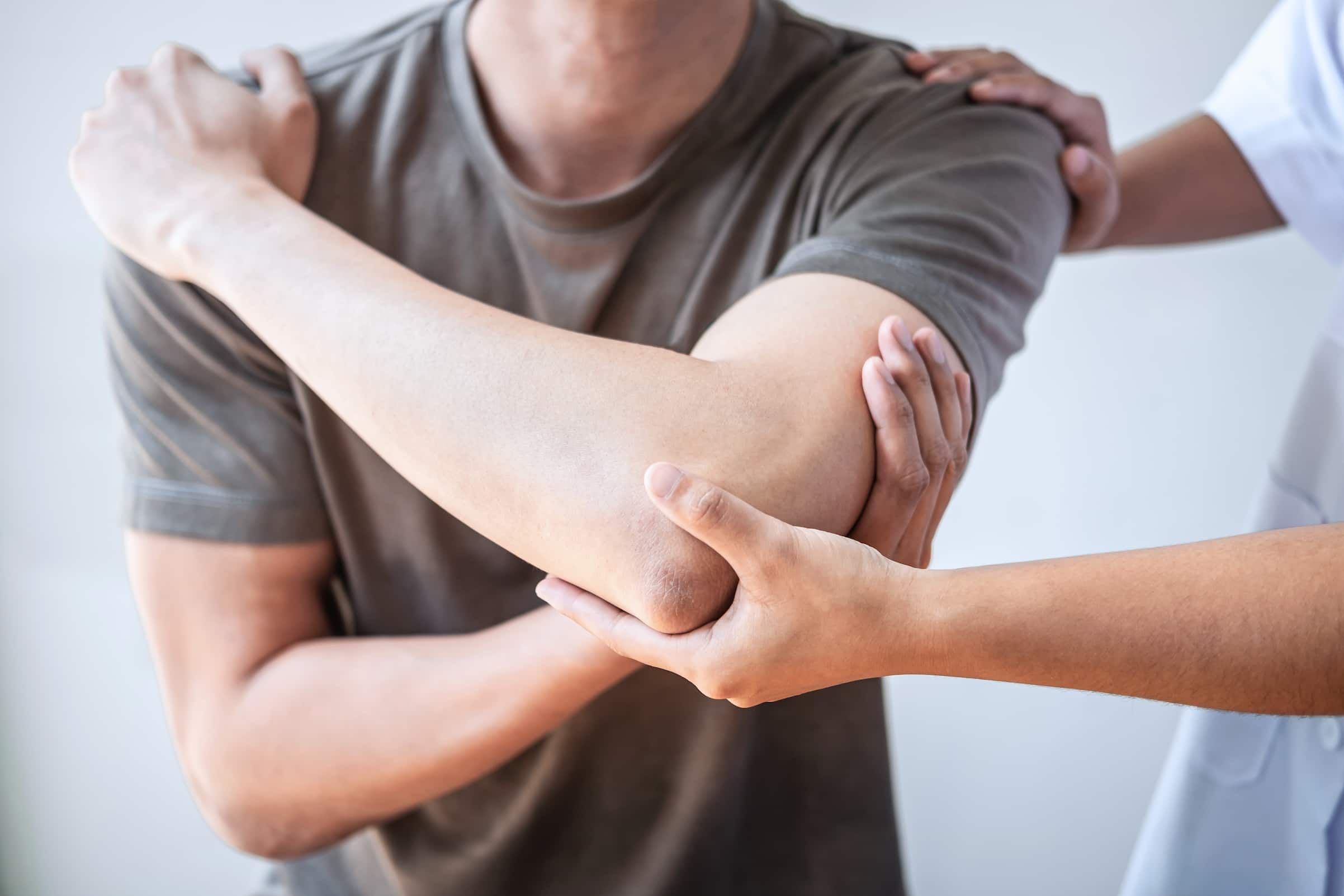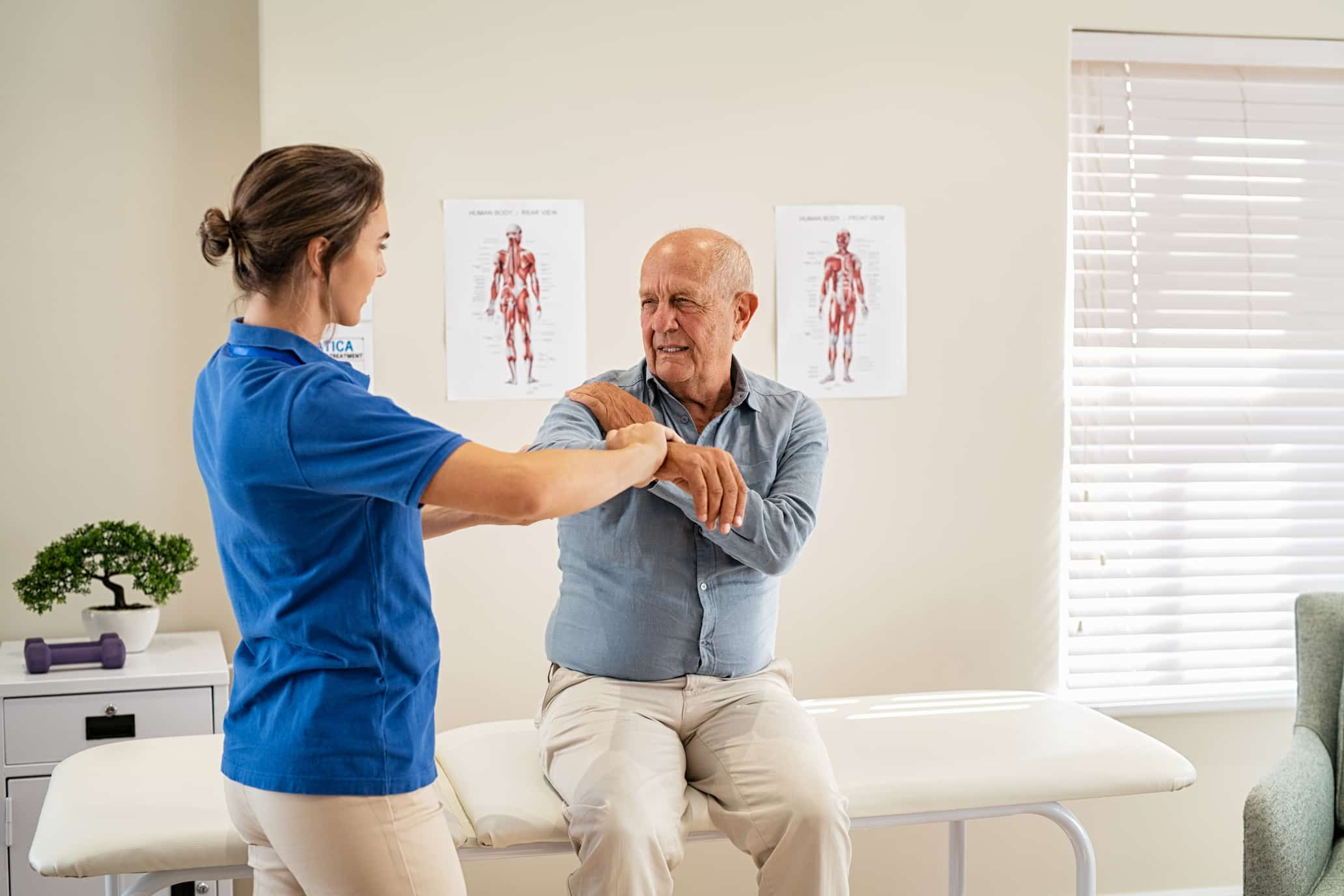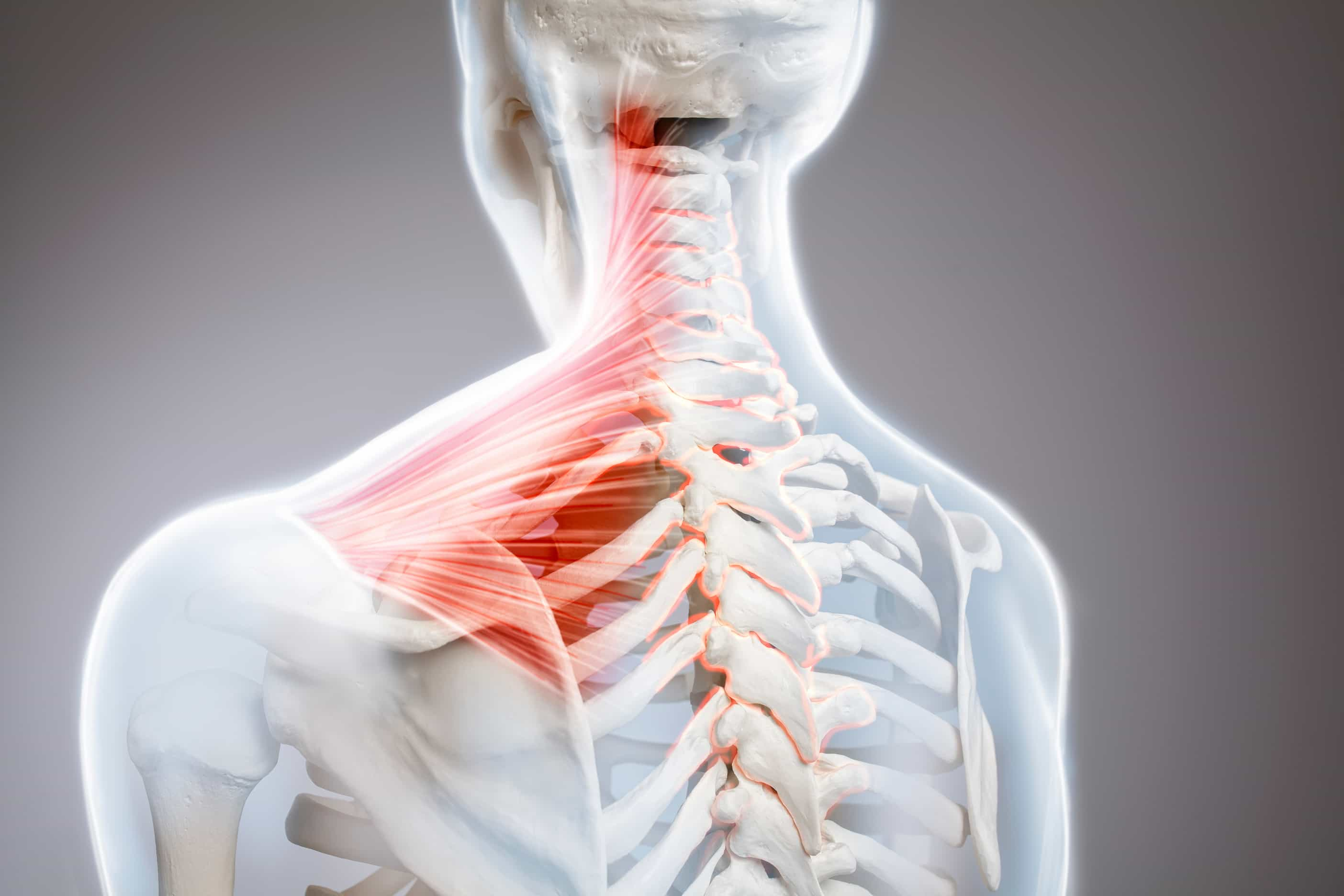Brachial Plexus Kirurgi i Tyrkia
Healthy Türkiye hjelper deg med å finne den beste brachial plexus kirurgi i Tyrkia til rimelige priser og tilbyr en helhetlig service i alle helsetjenester gjennom tilknyttede sykehus.
- Medisinsk Behandling
- Nevrokirurgi i Tyrkia
- Spinalfusionskirurgi i Tyrkia
- Behandling av ryggmargskompresjon i Tyrkia
- Hjernesirurgi i Tyrkia
- Hjernesvulstkirurgi i Tyrkia
- Diskbytte i Tyrkia
- Ryggkirurgi i Tyrkia
- Dyp hjernestimulering i Tyrkia
- Hydrocephalus Behandling i Tyrkia
- Minimalt Invasiv Nevrokirurgi i Tyrkia
- Neurotraumabehandling i Tyrkia
- Pediatrisk nevrokirurgi i Tyrkia
- Vaskulær Nevrokirurgi i Tyrkia
- Hjerneaneurismekirurgi i Tyrkia
- Kraniotomi for Hjerne Tumor Fjerning i Tyrkia
- Lumbal fusjonskirurgi i Tyrkia
- Behandling av Lumbal Prolaps i Tyrkia
- Lumbalryggkirurgi i Tyrkia
- Mikro Lumbal Discektomi i Tyrkia
- Mikrodiskektomi Ryggkirurgi i Tyrkia
- Perifer nervkirurgi i Tyrkia
- Ventral Discectomy i Tyrkia
- Brachial Plexus Kirurgi i Tyrkia
- Behandling av nevro-onkologi i Tyrkia
- Neuroendoskopi i Tyrkia
- Radiofrekvens Rhizotomi i Tyrkia
- Spinal Decompression Therapy i Tyrkia
- Stereotaktisk Strålekirurgi i Tyrkia
- Ryggmargsstimulator i Tyrkia
- Hjemmeside
- Medisinsk Behandling
- Brachial Plexus Kirurgi i Tyrkia

Om Brachial Plexus Kirurgi i Tyrkia
Brachial plexus kirurgi i Tyrkia er for behandling av skader som oppstår når armen på den ene siden av kroppen dras ned og hodet beveges til den andre siden. Å dra armen kraftig overstrekkes den, noe som gjør at armen føles svak. Denne følelsen kan vare bare noen få minutter eller i flere dager. Brachial plexus kan bli skadet på en rekke måter. Ved en katastrofal bilulykke eller annet traume kan den klemmes eller kuttes. Hvis nervene er avskåret fra ryggmargen, kan armen og hånden bli permanent lammet.
Mennesker som deltar i høyenergiske sporter som fotball eller håndball, samt de som har lidd alvorlige traumer eller til og med skuddskader, kan bli skadet på denne måten. Tyrkiske leger rapporterer at brachial plexus skader er mer vanlige i motorsykkelsesongen.
Andre brachial plexus skader er ikke et resultat av en spesifikk ulykke eller hendelse. En voksende svulst kan forårsake nervekompresjon, og betennelse kan forårsake ødem. Selv om det er sjeldent, kan noen nyfødte få brachial plexus skader under fødsel. Det kan skje hvis babyens skulder kolliderer med morens skamben, hvis babyens hode og nakke skyves bort fra skuldrene, eller hvis babyens skuldre overstrekkes under normal vaginal fødsel.
Din behandler vil vurdere symptomene dine og utføre en fysisk undersøkelse for å identifisere problemet ditt. Du kan ha en eller flere av følgende tester for å bistå med å bestemme omfanget og alvorlighetsgraden av en brachial plexus skade:
Røntgen: En røntgen av skulder og nakke kan avsløre om du har brudd eller andre problemer.
Elektromyografi (EMG): Under en EMG setter din behandler en nålelektrode inn i flere muskler gjennom huden. Testen måler musklenes elektriske aktivitet under sammentrekning og hvile. Når elektrodene er implantert, kan du oppleve noe ubehag, men de fleste kan fullføre testen uten større vanskeligheter.
Nerveledningsstudier: Disse testene, som ofte utføres som en del av en EMG, evaluerer ledningshastigheten i nerven når en liten strøm passerer gjennom den. Denne informasjonen indikerer hvor godt nerven fungerer.
Magnetisk resonansbilder (MR): En kraftig magnetfelt og radiobølger brukes i denne testen for å gi detaljerte bilder av kroppen i mange plan. Den kan ofte vise omfanget av skaden forårsaket av en brachial plexus skade og kan hjelpe med å bestemme helsen til arterier som er avgjørende for lemmen eller dens rekonstruksjon. Magnetisk resonansneurografi, en ny form for høyoppløselig MR, kan bli brukt.
Myelografi ved bruk av datastyrt tomografi (CT): For å skaffe tverrsnittsbilder av kroppen, bruker datastyrt tomografi en rekke røntgenstråler. CT myelografi kombinerer et kontraststoff som gis under en spinalpunksjon med en CT-skanning for å få et detaljert bilde av ryggmargen og nerverøttene. Når MR ikke gir nok informasjon, kan denne testen av og til brukes.
Vanligvis påvirker en brachial plexus skade bare den ene siden av kroppen. Alvorlighetsgraden av en skade bestemmes av en rekke faktorer, inkludert kraften av skaden og antall nerver som er skadet. Fordi nerver utfører ulike funksjoner, er hvilke som er skadet avgjørende.

Brachial Plexus Kirurgiprosedyre i Tyrkia
Brachial plexus kirurgi i Tyrkia er fokusert på et nettverk av nerver som gir mobilitet og følelse til skulder, arm og hånd. Nervene som støtter armen forlater ryggsøylen høyt i nakken, mens de som støtter hånd og fingre forlater ryggsøylen lavere i nakken. Dette nervenettverket inkluderer fire cervikale nerverøtter (C5-C8) samt den første thorakale nerveroten (T1). Disse røttene slår seg sammen for å danne tre trunser. Den øvre trunsen er laget av C5-C6, den midtre trunsen er laget av C7, og den nedre trunsen er laget av C8-T1.
Hver truns er delt inn i seksjoner. Fleksormusklene forsynes av halvparten av alle delinger over hele verden (som løfter og bøyer armen). Ekstensormusklene forsynes av de andre (som retter armen ut og bringer den ned). En brachial plexus fødselsskade er antatt å være forårsaket av en fødselsrelatert skade på barnets brachial plexus. Denne skaden kan resultere i tap av sensorisk og/eller motorisk funksjon i den berørte armen. Ifølge publiserte data forekommer en brachial plexus skade hos 1,5 av hver 1,000 levende fødsler.
Motorulykker, sykkelulykker, ATV-ulykker, sport og andre aktiviteter kan alle resultere i traumatiske brachial plexus skader. Graden av nerveskade varierer fra en moderat stamme til nerveroten som river seg løs fra ryggmargen. Blant prosedyrene er:
Neurolyse: Fjerning av det stramme arrvevet som har dannet seg rundt nerven.
Fjerning av nevrom: Når nevromet er stort nok, må det fjernes og nerven må festes på nytt ved bruk av ende-til-ende prosedyrer eller nervegraft.
Nervegrafting: Når avstanden mellom nerveendene er så stor at en reparasjon uten spenning ved bruk av ende-til-ende metoden ikke er mulig, brukes nervegrafting.
Neurotisering: I de fleste tilfeller brukes dette når det er en avulsjon. Reparasjonen gjøres med donorens nerver. Deler av røtter som fortsatt er festet til ryggmargen kan brukes for å erstatte avulsjonerte nerver.
Isolerte nervetransplantasjoner: Isolerte transplantasjoner kan utføres på barn fra 12 til 18 måneder. En frisk nerve nær målmuskel kobles til den skadde nerven. Ytterligere operasjoner for å forbedre den totale funksjonen til den berørte lemmen er tilgjengelige. Ikke-kirurgisk behandling er også en viktig del av behandlingen.
Yrkes- og/eller fysioterapi, inkludert bevegelsesutvalg, styrking, nevromuskulær elektrisk stimulering, Kinesio Tape, leddmobilisering, vannterapi og bruk av ortoser, er ofte foreskrevet.
Årsaker til Brachial Plexus Skader
Avhengig av alvorlighetsgraden og plasseringen av skaden, kan tegn og symptomer på en brachial plexus skade variere betydelig. I de fleste tilfeller er det bare én arm som er skadet. Brachial plexus er et nettverk av nerver som styrer arm- og håndbevegelser og følelse. En traumatisk brachial plexus skade innebærer plutselig skade på disse nervene, noe som kan resultere i svakhet, nummenhet eller tap av mobilitet i skulder, arm eller hånd. Brachial plexus går fra nakken til den øvre brystkassen og ender i armhulen. Når armen trekkes eller strekkes kraftig, blir dette nettverket av nerver ofte skadet. Mildere brachial plexus skader kan helbrede av seg selv. Mer alvorlige skader kan kreve kirurgi for å gjenopprette funksjonen i armen eller hånden.
Mindre-alvorlige Skader
Når brachial plexus nervene strekkes eller komprimeres under kontaktidrett som fotball eller bryting, kan mindre skade oppstå. Disse er kjent som "stingers" eller "burners", og kan forårsake følgende symptomer:
En elektrisk sjokklignende følelse eller en brennende følelse som skyter ned armen
Nummenhet og prikking i armen
Disse symptomene varer normalt kun noen sekunder eller minutter, selv om de kan vare i dager eller lengre hos noen.
Mer-alvorlige Skader
Mer alvorlige symptomer er forårsaket av skader som betydelig skader, river eller sprekker nervene. Når nervesrøtter blir revet fra ryggmargen, oppstår den mest katastrofale brachial plexus skaden. Mer alvorlige skader kan forårsake følgende tegn og symptomer:
Svakhet eller manglende evne til å bruke visse muskler i hånden, armen eller skulderen
Fullstendig mangel på bevegelighet og følelse i armen, inkludert skulderen og hånden
Alvorlig smerte
De fleste traumatiske brachial plexus-skader oppstår når armen vris eller strekkes voldsomt. Fall, trafikkulykker, kniv- og skuddskader, og, mest vanlig, motorsykkelulykker kan alle føre til skade. Det er ukjent hvor mange brachial plexus-skader som oppstår hvert år, selv om antallet ser ut til å øke globalt. Økt engasjement i energi-intensive sporter, samt høyere overlevelsesrater etter høyhastighets trafikkulykker, kan være medvirkende årsaker til det økende antallet slike skader.

Vi bryr oss om din helse
Healthy Türkiye gir det beste for din helse og komfort. Du vil føle deg privilegert hos oss.
Kvalitets Personlig Assistanse 24/7 Gjennom Din Reise
Tilpassbare Alt-Inkludert Pakker for Deg
Få Riktig Råd for Din Helse
Typer av Brachial Plexus Kirurgi i Tyrkia
Brachial plexus-kirurgi i Tyrkia fokuserer på et nettverk av nerver som kontrollerer bevegelse og følelse i arm og hånd. En traumatisk brachial plexus-skade involverer plutselig skade på disse nervene, som kan resultere i svakhet, følelse av nummenhet, eller tap av bevegelighet i skulder, arm, eller hånd. Brachial plexus går fra nakken til øvre bryst og ender i armhulen. Når armen blir kraftig trukket eller strukket, blir dette nervenettverket ofte skadet.
Milde brachial plexus-skader: De kan gro av seg selv. Mer alvorlige skader kan kreve kirurgi for å gjenopprette funksjonen i arm eller hånd. Målet med brachial plexus-kirurgi er å lindre ubehag samtidig som man gjenoppretter følelse og motorisk funksjon til skulder, arm og hånd. Type, plassering og omfang av nerveskader, samt din generelle helse og påvirkningen skade har på din arbeidskapasitet og livskvalitet, er alle faktorer som tas i betraktning i kirurgiske metoder. Kirurgen din kan foreslå følgende metoder:
Brachial Plexus Nerve Reparasjon: Når en nerve er avskåret eller skåret over, kan kirurgen være i stand til å sette den sammen igjen ved å sy endene tilbake sammen. Dette gjøres med et mikroskop og små, spesialiserte verktøy.
Brachial Plexus Dekompresjon og Neurolyse: Når en nerve er komprimert, men ellers frisk, kan dekompresjonskirurgi bidra til å redusere trykket på nerven samt adressere tilknyttede symptomer og tap av funksjon. Dette kan oppnås ved å fjerne arrvev eller adhesjoner fra rundt den skadde nerven (en behandling kjent som neurolyse).
Nerve Transplantasjon for Brachial Plexus Skader: Når en nerve er alvorlig skadet eller arrdannet, kan den ikke lenger overføre impulser fra hjernen til arm og hånd, noe som resulterer i lammelse. I dette tilfellet kan kirurger fjerne den skadde nervedelen og erstatte den med en del fra en annen disponibel sensorisk nerve i kroppen, slik som suralnerven i benet. En nerveoverføring er en behandling som hjelper til med å etablere en bro som erstatter den skadde nervedelen og gir en kanal for nervevekst.
Brachial plexus er dannet av fem nerver som stammer fra ryggmargen i nakken. Plexusen kobler disse fem nervene til nervene som gir følelse (følelse) til huden og tillater bevegelse i arm- og håndmusklene. Hver side av kroppen har en brachial plexus. Hver av de fem nervene i brachial plexus har en spesifikk funksjon, som å gi energi til muskler eller overføre sensorisk informasjon fra hånden til hjernen. Fordi hver nerve har en bestemt funksjon, er plasseringen av nerveskaden i plexus avgjørende for å forutsi konsekvenser og planlegge behandling.
Gjenoppretting fra Brachial Plexus Kirurgi i Tyrkia
Brachial plexus kirurgi i Tyrkia har som mål å reparere traumatiske skader på Brachial Plexus. Brachial Plexus er et nettverk av nerver som går fra ryggraden gjennom nakken, skuldrene, armhulen og inn i armen. Å flytte og transplantere en nerve som utvikler seg ved ryggraden og går til Brachial Plexus gjenoppretter de skadde nervene.
Det tar seks til åtte måneder for pasienten å komme seg fullstendig etter inngrepet. Pasientens styrke vil forbedre seg over to til tre år. Hvis gjenopprettingen tar lengre tid enn forventet, kreves en ny elektromyografi. Dette vil klargjøre om nervene vokser og repareres ordentlig. Sørg for at følgende gjenstander er tilgjengelige:
Fjernes skift av sårbandasje
Alkoholgel til desinfeksjon
Sterile gasbindpads
Enkelt å fjerne medisinsk tape
Paracet, etc.
I visse tilfeller kan gjenopprettingen involvere noe smerte. Hvis det er smerte, administreres medisinering.
For å forhindre armbevegelse, må pasienten bruke en armslynge. Dette vil også bidra til å lindre smerte.
Lette daglige aktiviteter hjemme anbefales.
Pasienten bør starte fysioterapi omtrent to uker etter inngrepet.
Til tross for at brachial plexus-skader kan være alvorlige og vanskelige å håndtere, har en teamtilnærming til behandling ført til betydelige forbedringer i pasientens funksjon. Selv om nåværende teknologi ikke kan returnere pasienter med lamme armer til sin tilstand før skaden, er gjenoppretting av armfunksjon et betydelig fremskritt. Nyere prosedyrer for å helbrede eller overføre nerver, samt nye medikamenter eller materialer som fremmer og stimulerer sunn nervevekst, er blant de fremtidige fremskrittene i behandlingen av disse skadene.

Kostnad for Brachial Plexus Kirurgi i Tyrkia i 2026
Alle typer medisinsk behandling, som brachial plexus-kirurgi, er svært rimelige i Tyrkia. Mange faktorer er også inkludert i å bestemme kostnaden for brachial plexus-kirurgi i Tyrkia. Din prosess med Healthy Türkiye vil vare fra det øyeblikket du bestemmer deg for å ha brachial plexus-kirurgi i Tyrkia til det øyeblikket du er fullt restituert, selv om du er tilbake hjemme. Den nøyaktige kostnaden for brachial plexus-kirurgi i Tyrkia avhenger av typen operasjon som er involvert.
Kostnaden for brachial plexus-kirurgi i Tyrkia viser ikke store variasjoner i 2026. Sammenlignet med kostnadene i utviklede land som USA eller Storbritannia, er kostnadene for brachial plexus-kirurgi i Tyrkia relativt lave. Så det er ikke rart at pasienter fra hele verden besøker Tyrkia for brachial plexus-kirurgiprosedyrer. Imidlertid er pris ikke den eneste faktoren som påvirker valg. Vi foreslår at du ser etter sykehus som er trygge og har brachial plexus-kirurgianmeldelser på Google. Når folk bestemmer seg for å søke medisinsk hjelp for brachial plexus-kirurgi, vil de ikke bare ha hatt rimelige prosedyrer i Tyrkia, men også den tryggeste og beste behandlingen.
På klinikker eller sykehus som er avtalt med Healthy Türkiye, vil pasienter motta den beste brachial plexus-kirurgien fra spesialistleger i Tyrkia til rimelige priser. Healthy Türkiye-teamene gir medisinsk oppmerksomhet, brachial plexus-kirurgiske prosedyrer og behandling av høy kvalitet til pasienter til en minimumskostnad. Når du kontakter Healthy Türkiye-assistenter, kan du få gratis informasjon om kostnadene for brachial plexus-kirurgi i Tyrkia og hva denne kostnaden dekker.
Pris på plexus brachialis-kirurgi i Storbritannia?
Kostnaden for plexus brachialis-kirurgi i Storbritannia er mellom £15.000 og £50.000.
Pris på plexus brachialis-kirurgi i USA?
Kostnaden for plexus brachialis-kirurgi i USA er mellom $50.000 og $150.000.
Pris på plexus brachialis-kirurgi i Tyrkia?
Kostnaden for plexus brachialis-kirurgi i Tyrkia er mellom $5.000 og $25.000.
Hvorfor Er Brachial Plexus Kirurgi Billigere i Tyrkia?
En av hovedhensynene før du reiser til utlandet for brachial plexus-kirurgi er kostnadseffektiviteten av hele prosessen. Mange pasienter tror at når de legger til flybilletter og hotellutgifter til kostnadene for brachial plexus-kirurgi, vil det bli veldig dyrt å reise, noe som ikke er sant. I motsetning til hva mange tror, kan tur-retur-flybilletter til Tyrkia for brachial plexus-kirurgi bookes veldig rimelig. I dette tilfellet, forutsatt at du oppholder deg i Tyrkia for din brachial plexus-kirurgi, vil dine totale reiseutgifter for flybilletter og overnatting koste mindre enn i noe annet utviklet land, som er ingenting sammenlignet med beløpet du sparer.
Spørsmålet “Hvorfor er brachial plexus-kirurgi billigere i Tyrkia?” er så vanlig blant pasienter eller folk som bare er nysgjerrige på å få sin medisinske behandling i Tyrkia. Når det gjelder priser på brachial plexus-kirurgi i Tyrkia, er det tre faktorer som muliggjør billigere priser:
Valutakursen er gunstig for de som ser etter brachial plexus-kirurgi og har euro, dollar eller pund;
De lavere levekostnadene og billigere generelle medisinske utgifter som brachial plexus-kirurgi;
For brachial plexus-kirurgi gis det insentiver fra den tyrkiske regjeringen til medisinske klinikker som jobber med internasjonale kunder;
Alle disse faktorene muliggjør billigere priser for brachial plexus-kirurgi, men la oss være tydelige, disse prisene er billigere for mennesker med sterke valutaer (som vi sa, euro, dollar, kanadisk dollar, pund, etc).
Hvert år kommer tusenvis av pasienter fra hele verden til Tyrkia for å få brachial plexus-kirurgi. Suksessen med helsevesenet har økt de siste årene, spesielt for brachial plexus-kirurgi. Det er lett å finne velutdannede og engelsktalende medisinske fagfolk i Tyrkia for alle typer medisinsk behandling, som brachial plexus-kirurgi.

Hvorfor velge Tyrkia for Brachial Plexus Kirurgi?
Tyrkia er et vanlig valg blant internasjonale pasienter som søker avansert brachial plexus-kirurgi. Tyrkias helseprosedyrer er trygge og effektive operasjoner med høy suksessrate, som brachial plexus-kirurgi. Den økende etterspørselen etter høykvalitets brachial plexus-kirurgi til rimelige priser har gjort Tyrkia til et populært medisinsk reisemål. I Tyrkia utføres brachial plexus-kirurgi av svært erfarne og utdannede leger med den mest avanserte teknologien i verden. Brachial plexus-kirurgi utføres i Istanbul, Ankara, Antalya og andre store byer. Årsakene til å velge brachial plexus-kirurgi i Tyrkia er som følger:
Sykehus av høy kvalitet: Joint Commission International (JCI) akkrediterte sykehus har dedikerte avdelinger for brachial plexus-kirurgi som er spesielt designet for pasienter. Internasjonalt og nasjonalt strenge protokoller gir effektive og vellykkede brachial plexus-kirurgier for pasienter i Tyrkia.
Kvalifiserte eksperter: Ekspertteamene inkluderer sykepleiere og spesialistleger som sammen utfører brachial plexus-kirurgi i henhold til pasientens behov. Alle medvirkende leger har stor erfaring med å utføre brachial plexus-kirurgi.
Rimelig pris: Kostnaden for brachial plexus-kirurgi i Tyrkia er rimelig sammenlignet med Europa, USA, Storbritannia, Singapore, Australia, etc.
Høy suksessrate: Svært erfarne spesialister, den beste tilgjengelige teknologien, og strengt fulgte sikkerhetsretningslinjer for postoperativ behandling av pasienten resulterer i en høy suksessrate for brachial plexus-kirurgi i Tyrkia.
I en nylig omfattende studie utført i Tyrkia fokuserte forskere på diagnostisk nøyaktighet av ulike tester, inkludert røntgen, elektromygrafi (EMG), nerveledningseksperimenter, magnetisk resonansavbildning (MR), og myelografi ved hjelp av computertomografi (CT), i vurderingen av omfanget og alvorlighetsgraden av brachial plexus-skader. Studien hadde som mål å gi verdifull innsikt i de mest effektive diagnostiske metodene for å bestemme skadeomfanget, antall skadede nerver og de spesifikke funksjonene som er påvirket. Resultatene bidrar til å forbedre påliteligheten av diagnostiske vurderinger for brachial plexus-skader, og veilede helsepersonell i å utvikle skreddersydde behandlingsplaner basert på de unike egenskapene til hvert tilfelle.
Er Brachial Plexus Kirurgi Sikkert i Tyrkia?
Visste du at Tyrkia er et av de mest besøkende destinasjonene for brachial plexus-kirurgi i verden? Det er rangert som en av de mest populære turistdestinasjonene for brachial plexus-kirurgi. Gjennom årene har det også blitt et veldig populært medisinsk turismedestinasjon, med mange turister som kommer for brachial plexus-kirurgi. Det er så mange grunner til at Tyrkia skiller seg ut som en ledende destinasjon for brachial plexus-kirurgi. Fordi Tyrkia er både trygt og enkelt å reise til, med en regional lufthavnshub og flyforbindelser til stort sett overalt, er det foretrukket for brachial plexus-kirurgi.
De beste sykehusene i Tyrkia har erfarent medisinsk personale og spesialister som har utført tusenvis av medisinske tjenester som brachial plexus-kirurgi. Alle prosedyrer og koordinering relatert til brachial plexus-kirurgi kontrolleres av Helsedepartementet i samsvar med loven. Gjennom mange år har den største fremgangen innen medisin vært observert innen feltet brachial plexus-kirurgi. Tyrkia er kjent blant utenlandske pasienter for sine gode muligheter innen brachial plexus-kirurgi.
For å understreke, foruten selve prisen, er nøkkelfaktoren for å velge en destinasjon for brachial plexus-kirurgi absolutt standarden på medisinske tjenester, sykehuspersonellets høye ekspertisenivå, gjestfrihet og sikkerheten i landet.
All-Inclusive Pakker for Brachial Plexus Kirurgi i Tyrkia
Healthy Türkiye tilbyr all-inclusive pakker for brachial plexus-kirurgi i Tyrkia til mye lavere priser. Ekstremt profesjonelle og erfarne leger og teknikere utfører den høykvalitets brachial plexus-kirurgien. Kostnaden for brachial plexus-kirurgi i europeiske land kan være ganske dyr, spesielt i Storbritannia. Healthy Türkiye tilbyr billige all-inclusive pakker for et langt og kort opphold for brachial plexus-kirurgi i Tyrkia. På grunn av mange faktorer kan vi gi deg mange muligheter for din brachial plexus-kirurgi i Tyrkia.
Prisen på brachial plexus-kirurgi skiller seg fra andre land på grunn av medisinske avgifter, arbeidspriser for personalet, valutakurser og markeds konkurranse. Du kan spare mye mer på brachial plexus-kirurgi i Tyrkia sammenlignet med andre land. Når du kjøper en all-inclusive pakke for brachial plexus-kirurgi med Healthy Türkiye, vil vårt helseteam presentere en liste over hoteller for deg å velge mellom. Ved reise for brachial plexus-kirurgi vil prisen på ditt opphold være inkludert i totalprisen på all-inclusive pakken.
I Tyrkia, når du kjøper alt-inkludert pakker for brachial plexus kirurgi gjennom Healthy Türkiye, vil du alltid motta VIP-transport. Dette er levert av Healthy Türkiye, som har avtaler med høyt kvalifiserte sykehus for brachial plexus kirurgi i Tyrkia. Healthy Türkiye-teamene vil organisere alt som gjelder brachial plexus kirurgi for deg og sørge for at du blir hentet fra flyplassen og sikkerhet bragt til din innkvartering. Når du har sjekket inn på hotellet, vil du bli transportert til og fra klinikken eller sykehuset for brachial plexus kirurgi. Etter at din brachial plexus kirurgi er vellykket fullført, vil transportteamet returnere deg til flyplassen i god tid før din hjemreise. I Tyrkia kan alle pakker for brachial plexus kirurgi arrangeres på forespørsel, noe som beroliger våre pasienter. Du kan kontakte Healthy Türkiye for alt du trenger å vite om brachial plexus kirurgi i Tyrkia.
De Beste Legene og Kirurgene i Tyrkia for Brachial Plexus Kirurgi
De beste legene og kirurgene i Tyrkia for brachial plexus kirurgi er høyt kvalifiserte fagpersoner som tilbyr spesialisert pleie og avanserte prosedyrer. Med deres ekspertise og topp moderne teknikker sikrer disse spesialistene at pasientene mottar høykvalitets brachial plexus kirurgi og oppnår optimale helseutbytter.

Ofte Stilte Spørsmål
Når nerveroten er avskåret fra ryggmargen, oppstår den mest katastrofale skaden på brachial plexus. Svakhet eller manglende evne til å bruke bestemte muskler i hånden, armen eller skulderen er tegn og symptomer på mer alvorlige skader. Det er ingen bevegelse eller følelse i armen, inkludert skulder og hånd.
Kirurgi for å gjenopprette brachial plexus nerver utføres vanligvis innen seks måneder etter skaden. Kirurgier utført etter det har en redusert suksessrate. Fordi nervevev vokser sakte, kan det ta flere år å realisere de fulle fordelene av kirurgi.
Selv om noen skader på brachial plexus helbreder av seg selv, kan andre, hvis de ikke behandles raskt, resultere i livslang funksjonshemning. Symptomer i skulderen, albuen og/eller hånden og fingrene kan oppstå avhengig av typen skade på brachial plexus.
Skade på brachial plexus kan forårsake mindre til alvorlig funksjonshemning i en arm. Handikappet kan enten være midlertidig eller permanent. Når handikappet er permanent, kan behandling bidra til å redusere alvorlighetsgraden.
Hodepine antas ikke å være forbundet med skade på brachial plexus. CSF-lekkasjer kan derimot være relatert til CSF-volumuttømming (lavtrykk) hodepine og kan utvikle seg i BPI som et resultat av en nerve rot avulsion. Bare noen få tilfeller av BPI-relaterte hodepine er rapportert.
Begrepet for denne kliniske enheten (thoracic outlet syndrome) og det faktum at noen av dens medfølgende symptomer oppstår utover de øvre ekstremitetene, som ansikts- og nakkesmerter (FP) og occipitale hodepine, er to kilder til forvirring angående komprimering av brachial plexus i thoracic inlet (OH).
Det er en noe sjelden tilstand. Brachial neuritt er også kjent som brachial neuropati eller skade på brachial plexus. Akutt brachial neuritt er karakterisert ved skade på brachial nerver som oppstår plutselig og uventet, uten forbindelse til annen skade eller fysisk tilstand.
